
Louis Poulsen Lights Its Way to Manila
Working with light structures is a concept that is all too familiar to many architects and designers. But for Danish brand Louis Poulsen, the challenge has always been to go beyond imagination. Louis Poulsen believes in designing to shape light – their collection of decorative, architectural, and outdoor lights were tailored to reflect the natural shape and movement of light. Eclectic, innovative, and constantly defying design standards, this award-winning brand has finally lit its way over to Manila!
HISTORY
The true legacy of Louis Poulsen as one of the world’s most influential lighting companies started in 1924 with the birth of PH, one of Louis Poulsen’s most beloved and iconic collections to date. PH defined the principles of glare free lighting and established the brand’s parameters: function, comfort, and ambiance.
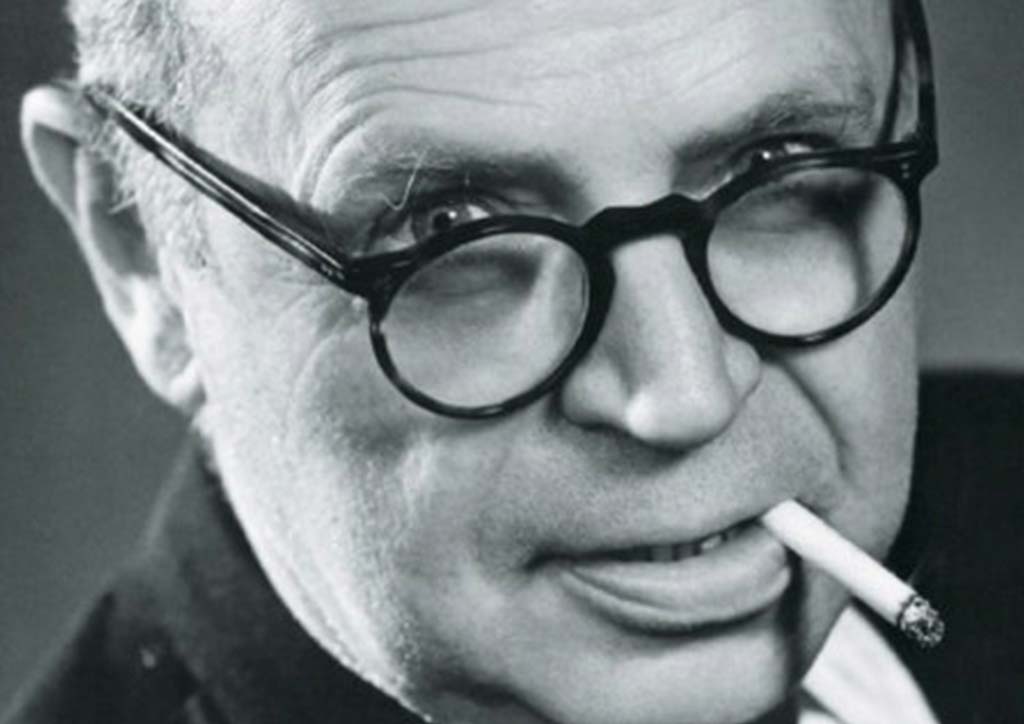
The PH concept won the Paris Exposition in 1925 and the very next year, and the company was tasked with lighting the Forum Building in Copenhagen, where the first PH pendant lights were debuted to much critical success. That same year, Louis Poulsen also published its first lighting catalog.
COLLABORATIVE CREATIONS
Since then, Louis Poulsen has become a household name in the lighting industry. The list of prestigious designers the brand has worked with has since expanded to cover the most respected names in the design world: Arne Jacobsen, Verner Panton, Øivind Slaatto, Alfred Homann, Oki Sato, Louise Campbell, GamFratesi, Clara von Zweigbergk, and many more.
An icon of innovative lighting design, Poul Henningsen’s three-shade PH lamp has grown many variations. First launched in 1926, the PH 2/1 Pendant was designed based on the principle of a reflective three-shade system that directs the majority of the light downwards. This mouth-blown fixture is glossy on top and matte on the underside, giving a soft and uniformly dispersed light.
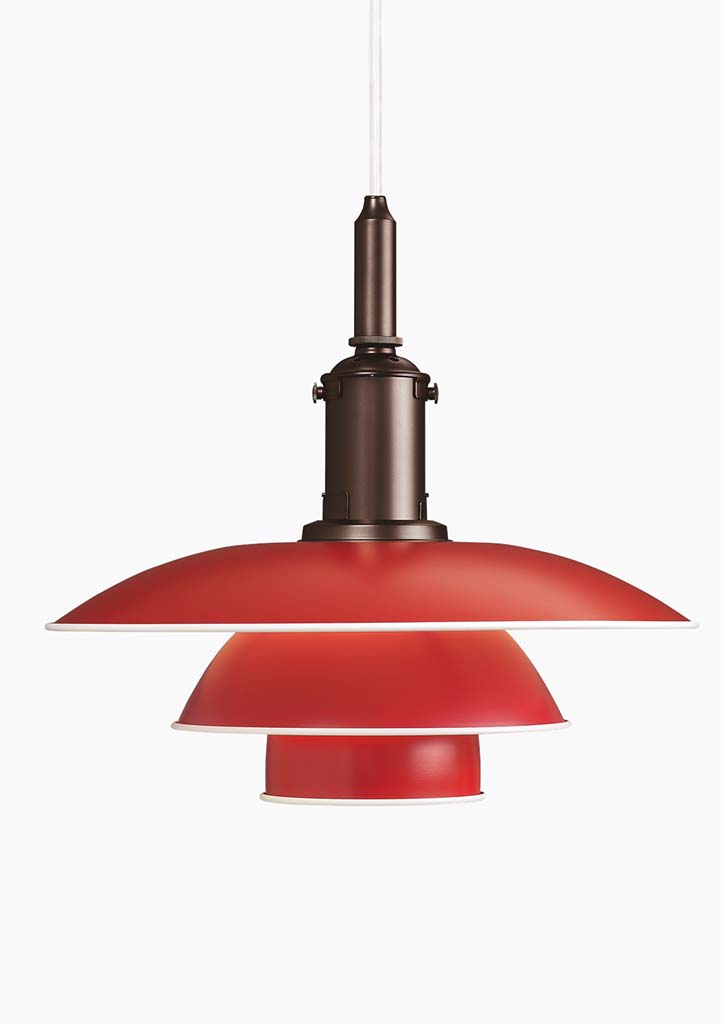
One of Henningsen’s most recognized forms, the PH 5 pendant, was created in 1958 to address a period where bulb manufacturers constantly changed their shapes and sizes. With the PH 5, the pendant retains functionality and remains glare-free irrespective of how the light is installed or the type of light source used. For its 60th anniversary, the PH 5 also came out with brighter and more cheerful colorways to celebrate its iconic legacy.
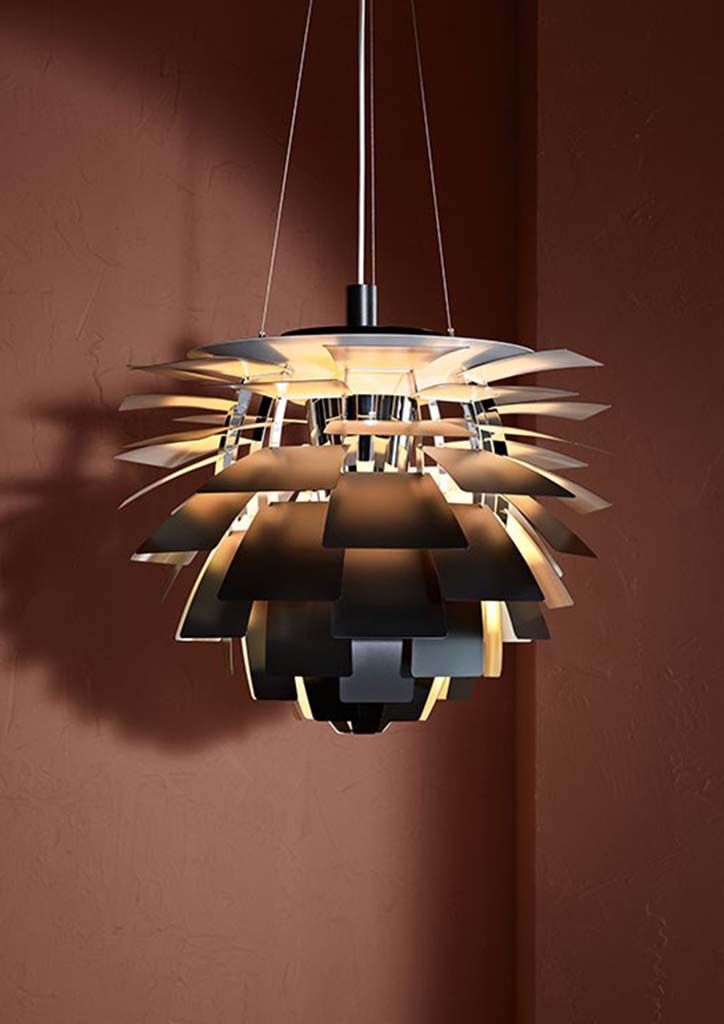
Technically and visually sophisticated, the PH Artichoke was originally designed for a fine dining restaurant in Copenhagen. Launched in 2008, the PH artichoke found its way from commercial to residential with its unique structure resembling that of its namesake. The PH artichoke is defined by its 72 leaves intricately and precisely positioned to emit beautiful lighting throughout the room. The PH Artichoke’s assembly is still done by hand to maintain a high level of quality. Much like Henningsen’s other creations, this striking statement piece is also 100% glare-free.
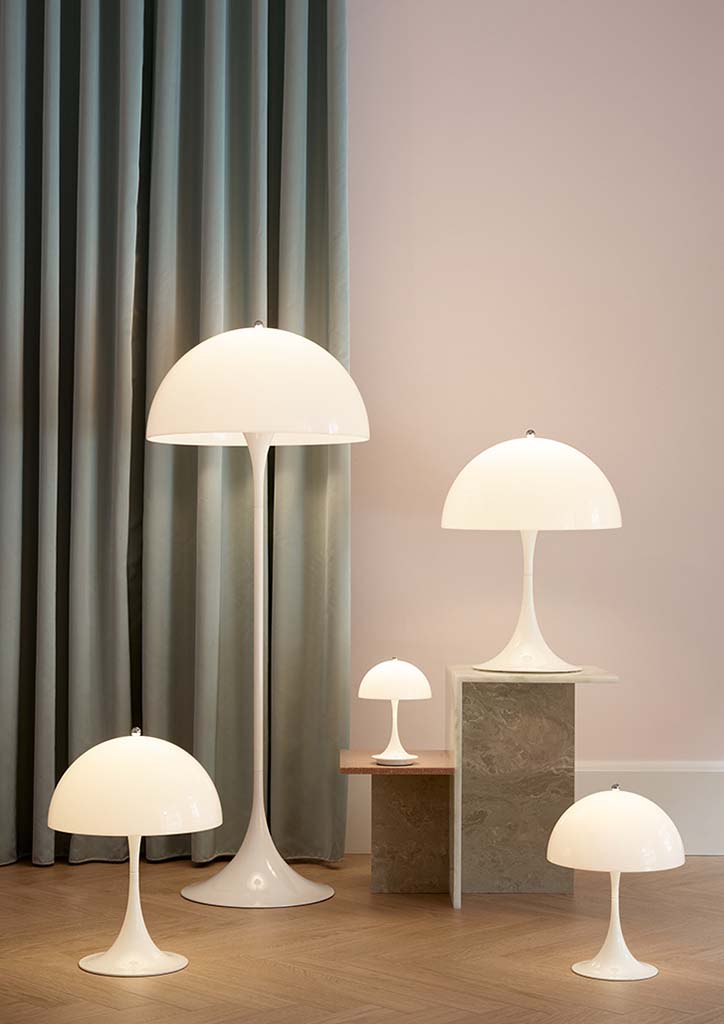
One of Louis Poulsen’s most memorable pieces is Verner Panton’s Panthella. An artist made famous for his eclectic and psychedelic designs, Panton’s work on the Panthella showcases his openness to experiment with euphoric shapes and colors. Designed in 1971, the Panthella is characterized by its curved opal acrylic shade and downward reflection which leaves a comfortable diffused light.
The Panthella family comes in floor lamp and table versions (Mini, 320, Portable) perfect for reading nooks, living rooms, and workspaces. The Panthella also celebrated its 50th anniversary this year with a reissue featuring a new medium size for the table lamps and a new metal finish.
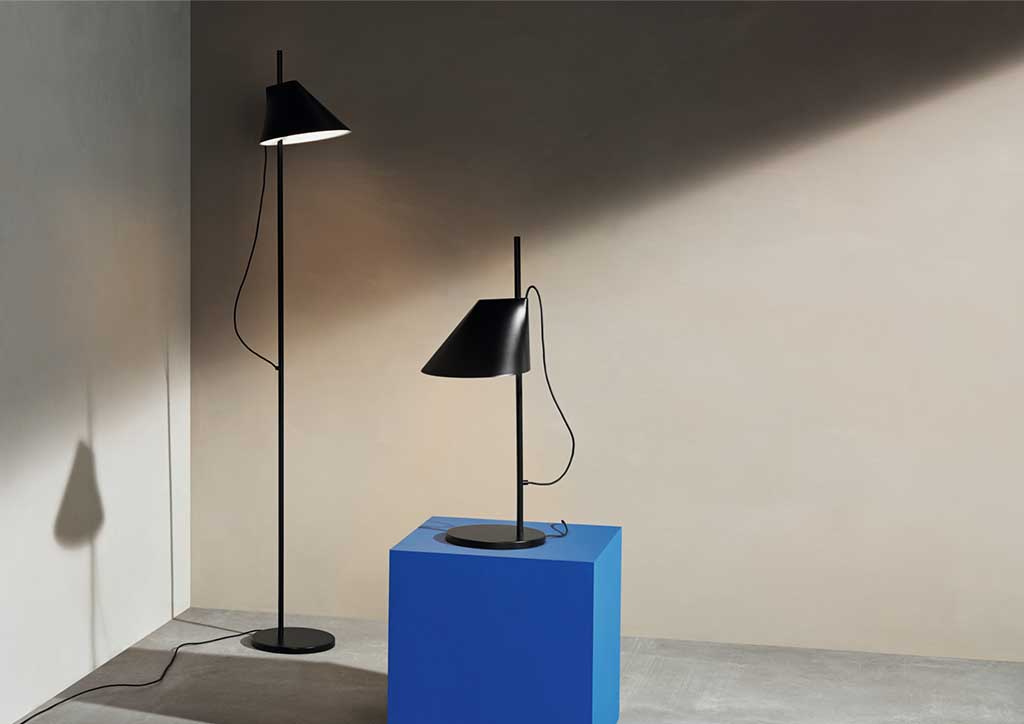
GamFratesi’s Yuh floor and table lamps got their name from the phonetic translation of the word ‘you’. By choosing this name, GamFratesi wanted to focus on the personal and adaptable dimension of their lamp, simple and easy to use. A minimal masterpiece created in 2017, the Yuh’s shades can be adjusted and rotated with a discreet dimmer button placed at the top of the shade.

A delicate glowing sphere, Øivind Slaatto’s 2015 masterpiece, the Patera, takes inspiration from the Fibonacci sequence and its presence in nature. A convergence of art and science, the Patera emits a soft, pleasant light guarded by its diamond-shaped cells which ensure that the correct angles are applied to avoid any unpleasant glare. At the same time, its unique structure consistently provides new impressions of the light when viewed from different angles.
Louis Poulsen is exclusively distributed by Focus Global, Inc. in the Philippines.


